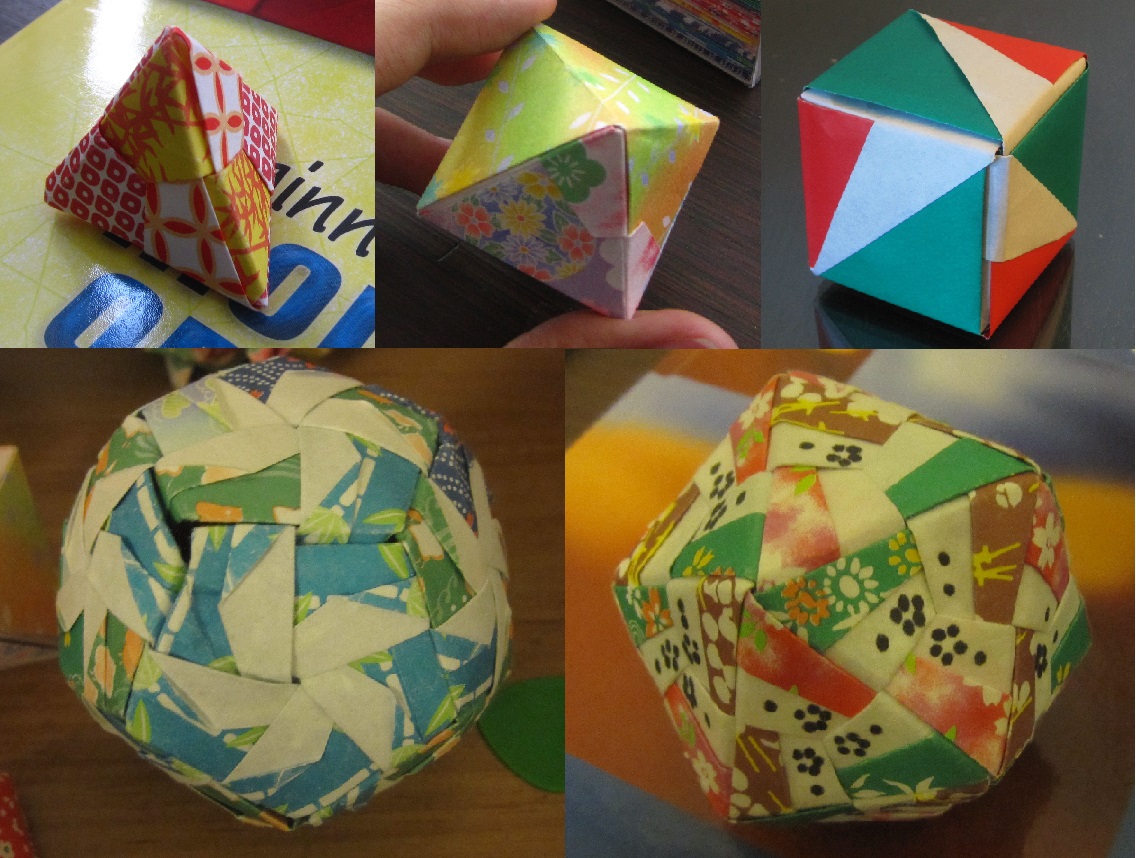
Helica Kusudama, by Ekaterina Lukasheva, in its unbloomed form
I forgot how pretty this model is. But it gets better. The model “blooms” to have flowers. More photos below the fold.

Helica Kusudama, by Ekaterina Lukasheva, in its unbloomed form
I forgot how pretty this model is. But it gets better. The model “blooms” to have flowers. More photos below the fold.
What are the qualities that are desirable in a music critic (or a movie critic, or video games reviewer, or book reviewer)?
Generally, the very first thing we want is that they review music that we have a chance of listening to. Maybe we’re considering whether to buy some music, and need some help to make a decision. Or we’re looking around to discover new music that we might like. Or we’re already listening to the music and want to reflect on the qualities of that music.
That means that we want music critics who like some of the same music we like. And since music critics usually wish to reach a sizeable audience, that means music critics have to like a lot of different things. Their tastes should be eclectic. Or, if a critic’s tastes are more particular, there needs to be an easy way to match them up with an audience with similar tastes. Music genres usually fulfill this purpose. For instance, if a reviewer only really likes post-rock, they can advertise themselves as a critic of post-rock.
One of the advantages of being an utterly serious person who never cracks a joke, is that I never let humor get in the way of facts. When it comes to “weird” subcultures like furries, it seems like a lot of people only see the humor, and can’t be bothered with facts. It’s easy to forget that furries are a subculture that actually exist, and therefore, your beliefs about them can be true or false.
You don’t really need to know much about furries, just like you don’t really need to know much about anime fandom, or death metal fandom. I don’t know much about furries, and I’m not writing this article from a perspective of greater knowledge. But it’s always important to remember, beyond the fog of your ignorance, there are actual facts to be known. You could look them up on Wikipedia at any time. There are academic studies on this subject, for real.
It may be helpful to compare furry fandom to Harry Potter fandom. In Harry Potter fandom, there are certainly some sexual fantasies going around, Harry/Draco being one of the most common slash pairings on AO3. But for some reason, Harry Potter fandom doesn’t get branded as a fandom that’s all about sex, while furry fandom does. Relative to Harry Potter fans, furries are a “marked” group. Anything that ever appears in conjunction with furries tends to stick around as an association, especially if it’s something that’s negative and confirms our already-held biases. In the mean time, the fact that the more mainstream Harry Potter fandom includes a lot of slashfic is taken for granted, or ignored entirely.
One interesting fact about electrons is that they are all literally identical. And I really do mean completely and literally identical, in the sense of sharing all properties. Yes, even the spatial distribution of their wavefunctions.
To illustrate how this is possible, consider a simple scenario, where we have two electrons, one at point A, and the other at point B. At first it would seem that electron 1 has a different location from electron 2. But in fact, the universe is in a quantum superposition of two states–the first state has electron 1 at A and electron 2 at B, while the second state has electron 2 at A and electron 1 at B. So even though we observe electrons at two distinct locations, the two electrons involved are actually identical.
The fact that electrons are identical has really important consequences. One consequence is the Pauli Exclusion Principle, which states that no single state can be occupied by two electrons simultaneously. So when we have a large atom, electrons will occupy many different orbitals of the atom, instead of having all electrons occupy the one orbital with lowest energy.
Of course, it’s not really practical to think of it this way all the time. Generally we prefer to think of each electron as being at a distinct location, and then we tack on additional rules like the Pauli Exclusion Principle.
The point is that the individuality of electrons is an idea that arises from practical necessity, and not from the fundamental physics. Practical necessities arise from social context. And in principle, a different social context could have different needs that are better fulfilled by some other way of thinking about it. Therefore, the concept of individual electrons is a social construct.
This is the first part of a series about symmetry in origami. Here I will explain what a symmetry group is through a series of examples.

This image is sourced from a video with folding instructions.
This heart illustrates one of the most basic forms of symmetry. A symmetry is a transformation that preserves the shape and orientation of the object. In this case, the transformation is a reflection. If you reflect the heart across a vertical line, you get back the same heart. But with further examples, we can see that this is not the only kind of symmetry.
When I was very young, I remember doing some math problems where I was given a shape, and asked whether there was a line of symmetry. This seemed very basic to me even at the time, and I thought that was all there was to it. But there is, in fact, much more. This has been particularly impressed upon me by my work in modular origami. For example, some of the most basic shapes I can make are the Platonic solids, which are very symmetrical indeed.

These are models I’ve folded for each of the platonic solids. From left to right, top to bottom: tetrahedron, octahedron, cube, dodecahedron, icosahedron.
Unfortunately, if you really want to understand the kind of symmetry extant in origami, you might need to take a course in advance mathematics. Specifically, this would be taught in Abstract Algebra, and even more specifically, finite group theory.
I intend to write a series explaining some of the basic concepts behind the symmetry of origami, but in a way that people can understand even without being into math. This isn’t necessary to creating or appreciating symmetrical origami, but you may find it helpful or interesting. For the readers who are into math, I hope you enjoy a more visually-oriented discussion of a topic that is typically discussed in rather abstract terms.
Articles in this series so far:
1. What is a symmetry group?
I used to call this monthly feature a “linkspam”, but after some consideration I am now calling it a link roundup. But whatever, it’s the same thing.
How an Ad Campaign Made Lesbians Fall in Love with Subaru – This is a very interesting article discussing one of the first ever queer-targeted ad campaigns. What surprised me the most is that Subaru used subtle gay-coding that straight audiences usually missed, but this was not because they wanted to hide their intentions. Subaru was open about it, and it was widely discussed in major newspapers. Rather, they used coded messages because market research said that lesbian audiences liked it better that way. Of course, I’m not sure that market research would extend to today.
Is there a “Gay Agenda” in Hip Hop? (video) – Music critic Anthony Fantano answers a question from a fan. I did not know this was a serious question that people asked. Apparently some of the barriers in hip hop have been breaking down, allowing more space for openly gay and bisexual rappers. This seems significant, especially given that hip-hop/R&B is the most consumed genre of music in the US. Of course, it doesn’t constitute a “gay agenda” in hip hop.
BTW, I don’t really listen to hip hop, but if any of you do, here’s an example song, enjoy. (content note: video depicts blood, lyrics talk about suicide and other violence.)
Damsels in Distress vs Distressed Dudes in Jin Yong stories (also see part 2) – Sara discusses the analogue of the distressed damsel trope in the Chinese genre of Wuxia. It seems that when male characters rescue damsels in distress, the male characters are usually regarded with suspicion. When female characters rescue distressed dudes, the female characters tend to get fridged afterwards in order to provide motivation for the male characters. It’s still kind of sexist but it’s a different variety of sexism from western fiction.
